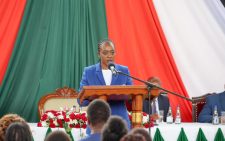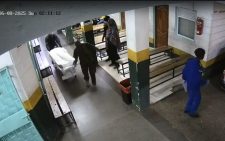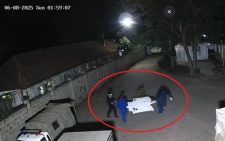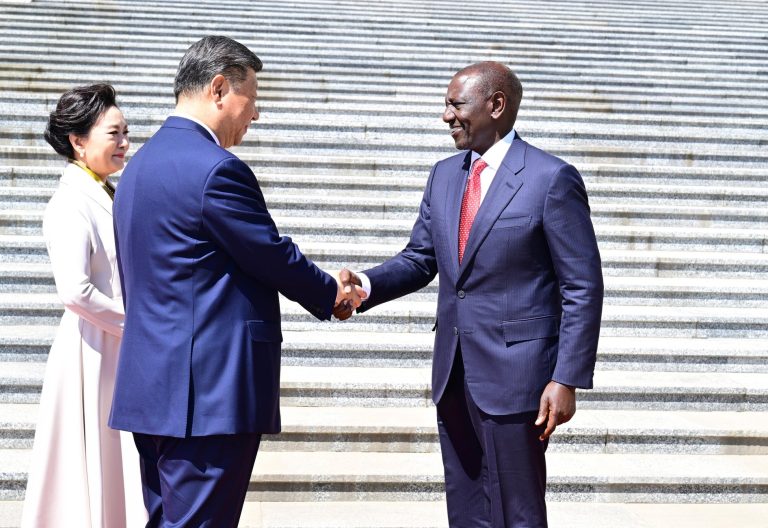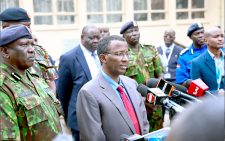Amid war, artists show hope endures in Sudan
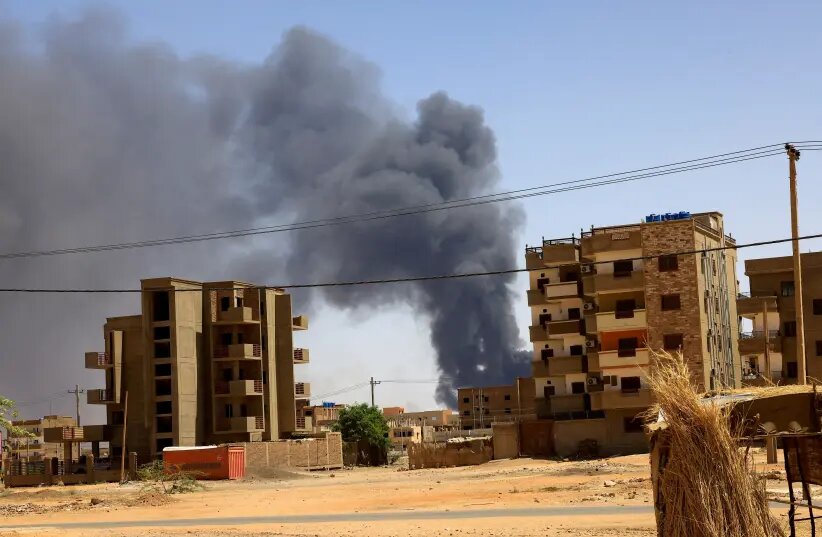
On September 8, I attended an exhibition showcasing the work of two Sudanese artists – Huzifa Siddig and Waleed Mohamed – at Station Pop Up on Ngara Road in Nairobi. The two were in the city courtesy of the Martin Ruth Initiative Award for artists under risk.
For two years now, a civil war has been raging in Sudan with no signs of a let-up. Primarily a power struggle between leaders of the Sudanese Armed Forces (SAF) and a powerful paramilitary group known as the Rapid Support Forces (RSF), the war began on April 15, 2023 when fighting broke out between rival armed factions in the Sudanese capital of Khartoum.
Almost 15,000 people have been killed, and more than 8.2 million displaced, giving rise to the worst displacement crisis in the world. Nearly two million Sudanese have been forced to flee to unstable regions in Chad, Ethiopia, and South Sudan, overrunning refugee camps, further prompting concerns that Sudanese refugees could soon attempt to enter Europe.
According to the Global Conflict Tracker, the UN continues to plead for more support as more than 25 million need humanitarian assistance, and deteriorating food security risks may soon trigger the “world’s largest hunger crisis”.
Attempts at mediation failed after warlords from both sides of the conflict refused to halt the violence, amid claims and counterclaims that regional and international actors have taken sides, fuelling the conflict by proxy.
It’s in the midst of this devastating conflict that the joint exhibition by Huzifa and Waleed was held in Nairobi, presenting powerful yet complex conversations about Sudan’s past and the present, depicting the short periods of calm that get interrupted by long episodes of violent conflicts that have become the trademark of the northeast African country in recent times.
While Waleed, a graduate of the faculty of fine and applied arts, seems to be nostalgic about the era of photo studios and their exceedingly stage-managed photos, complete with family ties that have now been rudely interrupted by the war, Huzifa’s artistry and style appears influenced by his architectural background. Most of his works seem to display how the relationship between an oppressor and an oppressed individual unfolds. In one of his artworks, a man seemingly confronted by a brutal protagonist in the intense conflict is depicted kneeling down, his hands raised open in submission.
In the totality of their artworks, the two represent a highly contemporary and unique category of artistic expression from the Sudanese art scene.
The latest situation report, as of 26 September, shared with the Horn of Africa Civil Society Forum by Europe External Programme with Africa (EEPA), a Belgium-based organisation specialising in issues of peace-building, refugee protection, and resilience in the Horn of Africa indicates that the SAF launched a large-scale attack on the RSF in Khartoum on September 25, targeting its strategic areas with airstrikes and ground operations in the centre, west, and south of the capital.
For some time now, the SAF has been in control of three main bridges that lead to Khartoum, including two that connect Omdurman and Khartoum.
At least four people were reportedly killed and 14 others injured during retaliatory attacks in the north of Omdurman. An airstrike by the SAF reportedly destroyed Nyala International Airport in South Darfur, damaging the main terminal and VIP halls.
Quoting MSF, the EEPA report highlights how “pregnant, birthing, and postpartum women and children are dying in shocking numbers” of preventable conditions in South Darfur due to lack of medical services, exacerbated by the conflict.
The cultural site of the ancient ruins of Naga has been broken into and remains unprotected, according to the Munich Museum of Egyptian Art. Unesco has also raised concerns that Sudan’s cultural heritage is facing unprecedented risk of being lost in its entirety to the mortar, barrels and projectiles deployed by the protagonists in the conflict in Sudan.
— The writer is the Chairperson of the Horn of Africa Civil Society Forum; suba_churchill@yahoo.com

